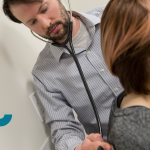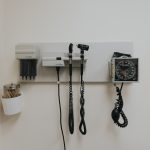Share
Predicting positive COVID-19 test
Alberta Health Services’ COVID-19 Scientific Advisory Group (SAG) recently investigated the latest evidence from around the world pertaining to a key question: Are there demographic, clinical, basic lab or radiologic features that predict testing positive for COVID-19 infection?
The ability to predict who will have a positive COVID-19 test result would be useful for several reasons. Predicting who will test positive will increase the efficiency of test ordering, ensuring optimal use of testing supplies as we enter into the maintenance phase of the pandemic. In addition, these criteria could be applied to patients who test negative – a patient who seems high risk by predictive criteria is more likely to have a false negative test, and contact and droplet precautions should be maintained while awaiting a repeat test. Recent studies suggest that the demographic, clinical and lab features predicting a positive COVID-19 test vary by the setting of study (emergency department vs community testing facility).
Recommendations
- Clinical and exposure risk should be identified and documented at admission, in addition to consideration for transitions in care. Currently, features from patients presenting at acute centres linked to positive predictive weight include:
- Recent travel to a high risk country or area
- Direct contact with a COVID-19 positive person with fever and/or cough,
- Confirmed pneumonia on imaging
- Presence of lab abnormalities such as lymphopenia or an elevated NLR (>3.5)
- Positive predictive features for positive COVID testing from community settings (people presenting to assessment centres or via symptom tracker apps) include:
- Loss of smell or taste
- Severe or significant persistent cough
- Severe fatigue
- Reduced appetite.
These symptoms should be included in community and assessment centre tracking systems (which already include age, exposure to a COVID-19 positive persons or outbreak locations) in order to inform optimal testing and to support community-level needs for future public health interventions.
- Risk assessment tools cannot replace the need for RT-PCR testing, and repeated testing may be required in patients initially testing negative who had a high pre-test probability of COVID-19 based on clinical assessment and the factors noted above.
To see the complete list of Rapid Response Reports, please check the COVID-19 Scientific Advisory Group website. New reports and updates appear here on a daily basis.
























Comments for this post are now closed. If you would like to share your feedback on this topic, please email support@cpsa.ca.